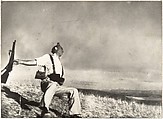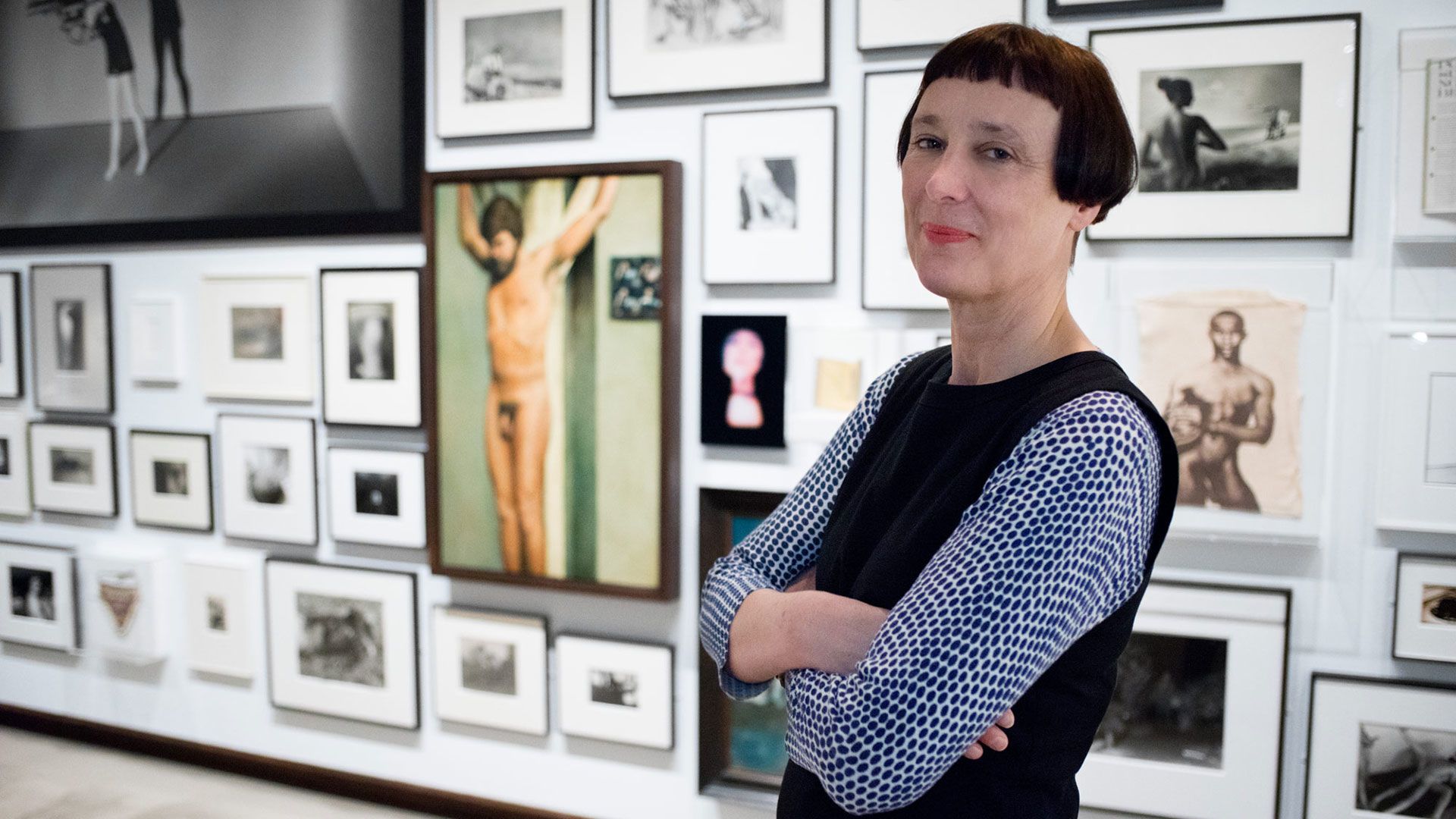The Falling Soldier
Robert Capa American, born Hungary
Not on view
Possibly the most famous of war photographs, this image is all but synonymous with the name of its maker, Robert Capa, who was proclaimed in 1938, at the age of twenty-five, "the greatest war photographer in the world" in the British magazine "Picture Post." Taken at the beginning of the Spanish Civil War and showing the moment of a bullet's impact on a loyalist soldier, this photograph has become an emblem of the medium's unrivaled capacity to depict sudden death. It is also prototypical of the style of photojournalism that came to define the work of Capa and his colleagues at the picture press agency Magnum Photos in the late 1940s.
If such images have etched themselves into the public's mind, it is not because of their existence as original prints, but rather because of their proliferation through newspapers and magazines. This mounted and varnished print is thus an anomalous rarity: signed by Capa himself, it appears to have been made in the late 1940s or early 1950s for public exhibition.
Although the scene depicted is specific to an event now temporally distanced, the image nevertheless seems strangely familiar and retains its powerful impact. Its expressive charge recalls another, equally famous image of war in Spain, Francisco Goya's "The Third of May, 1808" (1814). Capa's image excludes Goya's narrative elements--the executioners, stark backdrop, and dramatic nocturnal light--and instead zeroes in on the instant of death forever anticipated in the painting.
This image cannot be enlarged, viewed at full screen, or downloaded.




